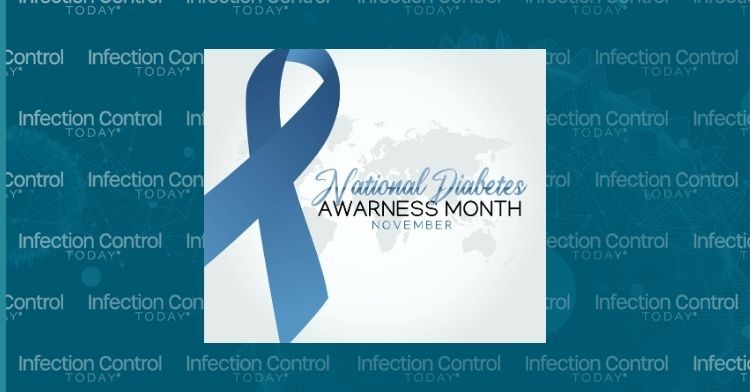Understanding Infection Risks for Patients With Diabetes During Diabetes Awareness Month
Diabetes Awareness Month in November highlights the heightened susceptibility of diabetes patients to infections. Explore the key reasons behind their increased infection risk and the importance of infection prevention.
November is distinguished as National Diabetes Awareness Month.
(Adobe Stock 468304724 by Yogi)

The month of November is distinguished as Diabetes Awareness Month. This month serves as an opportunity to illuminate critical facets of diabetes care that extend beyond the conventional narratives. This year, our focus sharpens on a pivotal aspect that significantly impacts the well-being of individuals contending with diabetes: infection prevention.
Per the CDC, in 2021, it was estimated that 11.6% of the US population had diabetes, or 38.4 million people. As we delve into the complexities of managing diabetes, it becomes imperative to underscore the heightened vulnerability of diabetes patients to infections. The intricate interplay between compromised immune function and the physiological intricacy of diabetes mellitus (DM) creates an environment where infections can pose severe risks and complications.
From minor skin infections to more severe respiratory and urinary tract infections, diabetes patients face a heightened susceptibility that demands focused attention. In a study published in Diabetes Care, it was estimated that 6% of infection-related hospitalizations and 12% of infection-related deaths were attributable to diabetes. This study was a retrospective cohort study that compared primary care patients in England, ranging from 40 to 89 years old, with Type 1 diabetes (T1DM) and with Type 2 diabetes (T2DM) to control subjects without diabetes. All patients were matched based on age, sex, and practice characteristics.
Patients with diabetes face an increased risk of infections due to a combination of factors related to the complex interplay between the immune system and the metabolic abnormalities associated with diabetes. Here are several key reasons why individuals with diabetes are more susceptible to infections:
- Impaired Immune Function: Diabetes can compromise the function of the immune system. High blood sugar levels, typical in diabetes, can impair the ability of white blood cells to function effectively, reducing the body's ability to fight off infections.
- Poor Circulation: Diabetes often leads to vascular complications and impaired blood flow. This reduced circulation can impact the transport of immune cells and antibodies to sites of infection, slowing down the body's natural defense mechanisms.
- Neuropathy: Diabetic neuropathy, or nerve damage, is a common complication. It can affect the nerves that control various bodily functions, including those that regulate sweat gland activity. Reduced sweating can lead to dry skin, making it more prone to cracks and openings for infections.
- Compromised Wound Healing: Diabetes can impede the healing of wounds and injuries. High blood sugar levels can impair the formation of new blood vessels and the production of collagen, delaying the closure of wounds and providing an entry point for infections.
- Altered Microbial Environment: Elevated glucose levels create an environment conducive to microorganisms' growth. Bacteria and fungi thrive in environments with high sugar levels, increasing the risk of infections in various body parts, including the skin, urinary tract, and respiratory system.
- Reduced Function of Defense Mechanisms: Diabetes can weaken the body's first line of defense mechanisms, such as the mucous membranes and protective skin barriers. This makes it easier for pathogens to enter the body and cause infections.
- Comorbidities: Individuals with diabetes often have other health conditions, such as obesity or cardiovascular disease, which can further increase the risk of infections and complicate the management of diabetes.
Understanding and addressing these factors is crucial in managing diabetes effectively and reducing the risk of infections. Regular monitoring of blood glucose levels, maintaining good hygiene practices, and promptly addressing any wounds or infections are essential components of diabetes care to mitigate these risks.
By spotlighting infection prevention in diabetes patients, we aim to bridge the gap between awareness and actionable insights. As we unravel the intricacies of this critical facet of diabetes care, we aspire to equip health care professionals, caregivers, and individuals with diabetes with the knowledge needed to fortify defenses against infections, ultimately fostering a healthier and more resilient diabetic community.